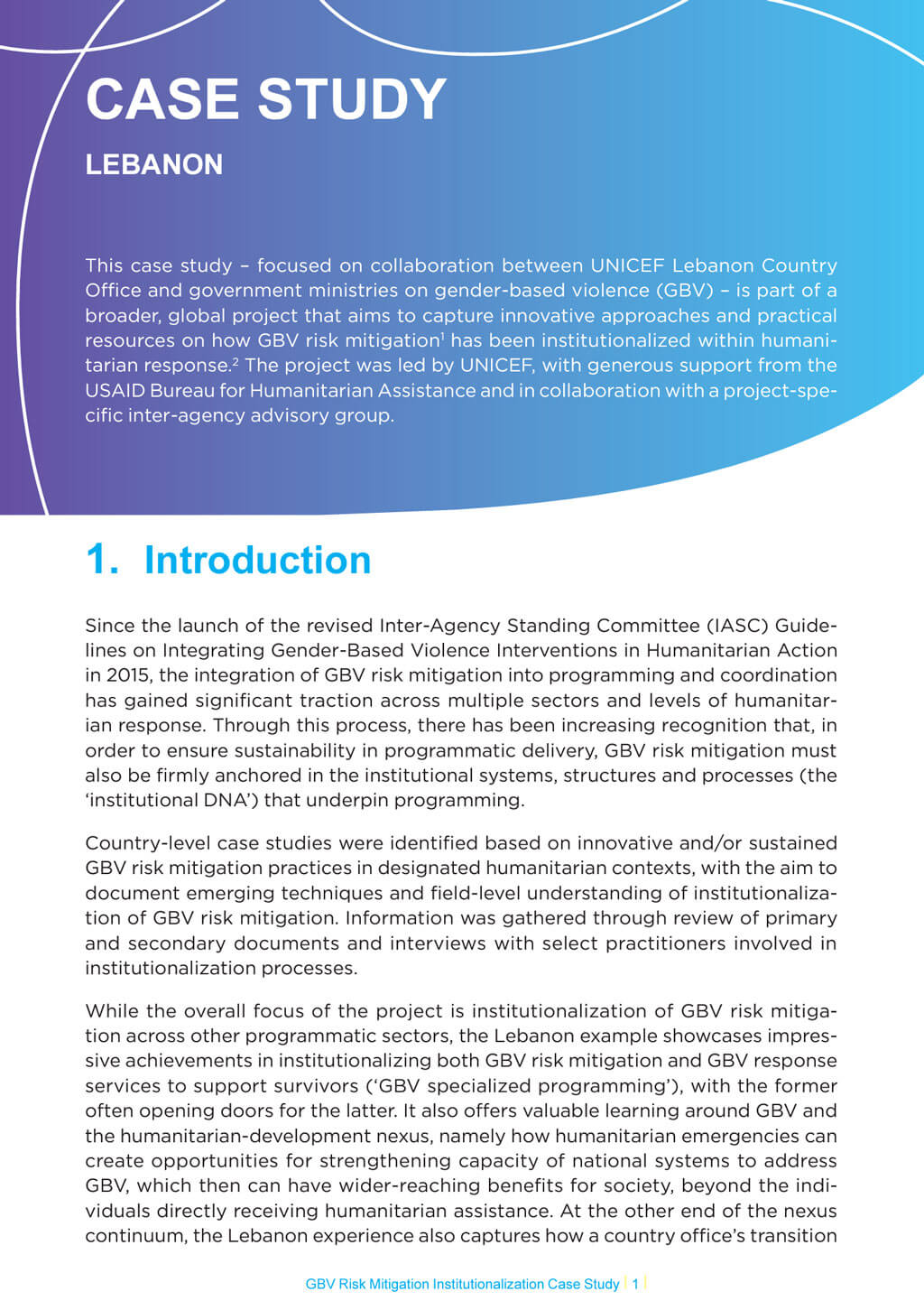“Planning and reporting” refers to the organizational processes that apply across the global, regional, or country level, and go beyond a single project, programme or partnership.
Why is it important?
When GBV risk mitigation is part of an organizational or sectoral/cluster plan, the organization, sector or cluster is accountable and obliged to mobilise resources and report against progress – an important step to institutionalizing GBV risk mitigation. It also increases visibility of GBV risk mitigation in an organization, for example, by triggering annual reporting against progress implementing GBV risk mitigation. It can also make progress in GBV risk mitigation tangible, as the results of GBV risk mitigation can be presented in a more visible way, e.g., through statistics, dashboards, vignettes pulled from qualitative data, and examples from other offices. This entry point is linked to the strategy and funding entry points. It may form part of a wider strategy or feature as a trigger for mobilising funding within some organizations.
Why are they relevant?: Summarizes the menu of GBV risk mitigation actions and accompanying indicator that falls under the “Gender Transformative Strategies” component of UNICEF’s Strategic Plan 2022–2025.
Why are they relevant?: Includes one UNICEF country office experience of integrating GBV risk mitigation into the annual work planning process.
Example 1
UNICEF’s minimum set of GBV risk mitigation actions and accompanying indicator
In 2021, UNICEF incorporated a minimum set of GBV risk mitigation actions. The package is presented as a menu, with a tier of mandatory actions and a tier of complementary actions.
Core actions (all must be met to be in full compliance):
- Consultations with women and girls
- GBV risk analysis
- Programmatic adaptations based on the risk analysis
Complementary actions (at least one must be met to be in full compliance):
- Integration into sector-specific policy, guidance, and/or core documents
- GBV risk mitigation training
- Safety audits
Each year, all UNICEF country offices are required to report their achievements and progress against the accompanying indicator, which sits under the “Gender Transformative Change Strategies” component of the 2022–2025 Strategic Plan. To emphasize the importance of GBV risk mitigation as a collective responsibility that cuts across all areas of programming, accountability for implementing and reporting against the minimum set of actions rests with the country office as a whole


